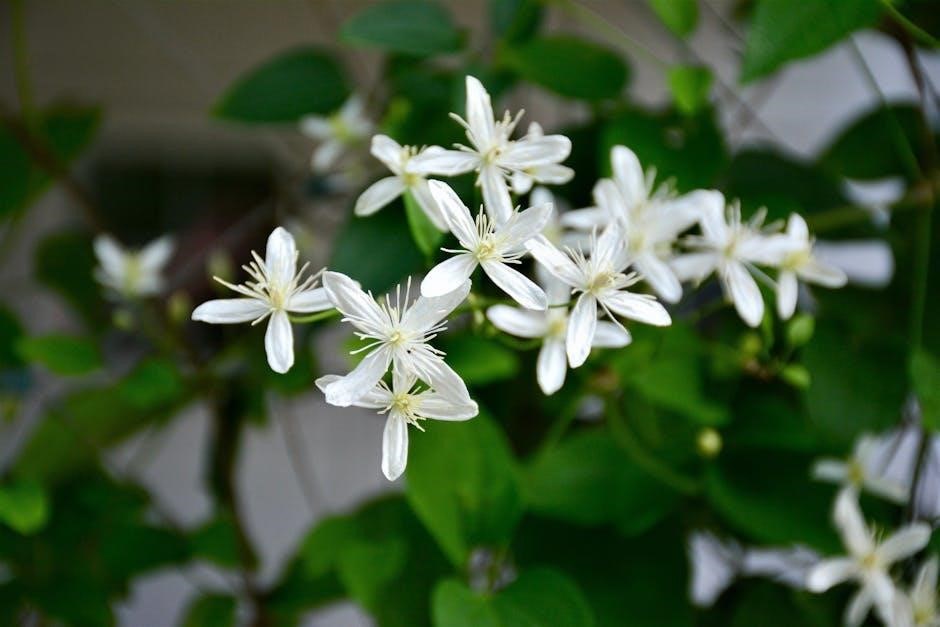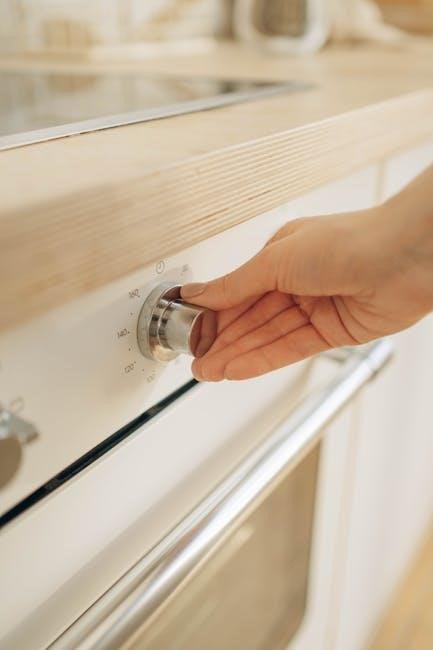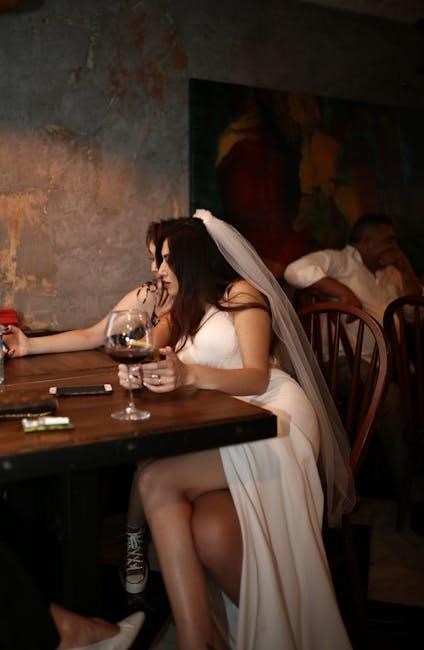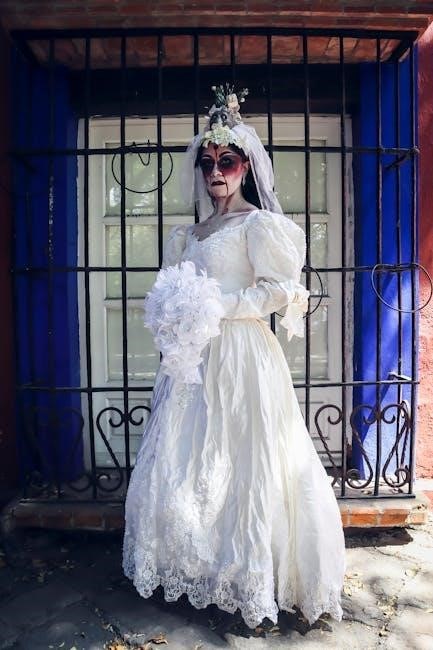Happy Light Therapy is a non-invasive treatment using bright light to simulate natural daylight, helping improve mood, energy, and mental clarity. It’s often used for Seasonal Affective Disorder (SAD) and other conditions. The therapy involves exposure to a specialized light source, typically in the morning, to regulate circadian rhythms. Always follow instructions and consult a professional before starting. Regular use can enhance overall well-being and help maintain a consistent daily routine.
1.1 What is a Happy Light?
A Happy Light is a specialized light therapy device designed to mimic natural daylight. It emits bright, full-spectrum light to help regulate mood, energy, and circadian rhythms. Commonly used for Seasonal Affective Disorder (SAD), it provides a portable and convenient way to enjoy the benefits of sunlight indoors. Models like the HappyLight Touch Plus and Liberty Full-Size offer adjustable settings for personalized use.
1.2 Benefits of Using a Happy Light
Using a Happy Light offers numerous benefits, including improved mood, increased energy levels, and enhanced mental clarity. It helps regulate circadian rhythms, reducing symptoms of Seasonal Affective Disorder (SAD), fatigue, and lethargy. The bright light exposure mimics natural daylight, promoting a sense of well-being and helping users maintain a consistent daily routine without medication. Regular use can significantly boost overall mental and physical health.

Setting Up Your Happy Light
Start by unboxing and assembling the light, following the included instructions. Place it in a well-ventilated area, ensuring the light faces you. Connect the plug to a wall outlet without a dimmer switch. Position the lamp at eye level to maximize effectiveness. Ensure all components are securely attached before use.
2.1 Unboxing and Physical Setup
Begin by carefully unboxing your Happy Light and ensuring all components are included. Gently remove the light from its packaging and place it on a stable surface. Connect the power cord to the device and plug it into a wall outlet, avoiding any dimmer switches. Position the light at eye level, ensuring it faces you directly. Secure any adjustable stands or tilts to maintain stability. Refer to the manual for specific assembly instructions if needed.
2.2 Placing the Light in an Optimal Position
Position the Happy Light at eye level, approximately 16-24 inches away from your face. Ensure the light is directed toward your eyes but slightly to the side to avoid direct glare. Place it in a spot where you can sit comfortably, such as a desk or table, and use it in the morning to help regulate your circadian rhythm. Avoid placing it behind you or at an angle that causes discomfort.

Using the Happy Light

Using your Happy Light is simple: sit in front of it in the morning for 20-30 minutes. Consistency is key to boosting mood and energy.
3.1 Daily Usage Instructions
Start your day by sitting in front of the Happy Light for 20-30 minutes, ideally in the morning. Position the light at eye level, 16-24 inches away. Keep your eyes open but not directly staring at the light. Consistency is key for effectiveness. Adjust the brightness if needed, and avoid dimmer switches. Follow these steps daily for optimal results and mood improvement.
3.2 Adjusting Brightness and Settings
Most Happy Lights offer adjustable brightness settings, allowing you to customize the intensity based on your comfort. Use the control buttons to increase or decrease brightness. For optimal results, position the light at eye level, 16-24 inches away. Avoid direct stare but keep eyes open. Adjust settings as needed for comfort and effectiveness, ensuring the light is directed toward your face for proper exposure.

Safety Precautions
Always follow safety guidelines when using a Happy Light. Avoid direct eye stare and ensure the light is directed at your face. Consult a professional before starting therapy to prevent adverse effects. Keep the light away from flammable materials and avoid using it near water. Regularly inspect the device for damage. Proper usage ensures safe and effective results. Follow all instructions carefully. Ensure the light is placed on a stable surface to avoid accidents. Never use the light if it is damaged or malfunctioning. Keep children away from the device when in use. If you experience discomfort, discontinue use and seek medical advice. Always unplug the device when not in use to prevent electrical hazards. Use the light in a well-ventilated area to avoid overheating. Do not use the light if you have certain medical conditions without consulting a healthcare provider. Be aware of any allergic reactions or sensitivity to bright light. Wear tinted glasses only if recommended by a professional. Never touch electrical components with wet hands. Ensure the light is securely plugged into a wall outlet without a dimmer switch. Follow all technical specifications provided by the manufacturer. Keep the light out of reach of pets to avoid accidental damage. Clean the light surface regularly to maintain optimal performance. Avoid using the light near mirrors or reflective surfaces to prevent glare. Always read and follow the manufacturer’s instructions before first use. If you experience eye strain or headaches, reduce the brightness or discontinue use temporarily. Ensure the light is certified by recognized safety standards. Never modify the device or attempt repairs yourself. Use the light only for its intended purpose as described in the user manual. Be cautious when moving the light to avoid tripping over cords. Store the light in a cool, dry place when not in use. Dispose of the device responsibly at the end of its lifespan. Always prioritize your health and safety when using light therapy. Follow all local electrical safety regulations. Use the light in a well-lit room to avoid sudden changes in brightness. Avoid using the light if you are taking medications that increase light sensitivity. Keep track of the light’s usage time to prevent overexposure. Ensure the light is compatible with your electrical outlets before use. Be aware of any recalls or updates from the manufacturer. Use the light at a comfortable distance to avoid eye discomfort. Never use the light as a substitute for medical treatment without professional advice. Follow all post-purchase guidelines provided by the seller. Ensure the light is properly grounded to prevent electrical shocks. Use the light only in areas with stable electricity supply. Avoid using the light near combustible materials. Keep the light away from direct sunlight to prevent overheating. Always test the light at a low setting first to gauge your comfort level. If you experience dizziness or nausea, stop use immediately. Ensure the light is free from obstructions to maintain airflow. Use the light only during recommended hours to avoid disrupting sleep patterns. Be mindful of the light’s intensity and adjust as needed for comfort. Follow all warranty and maintenance instructions provided by the manufacturer. Ensure the light is used in accordance with its intended use case. Avoid using the light in extreme temperatures. Keep the light’s user manual accessible for future reference. If you are unsure about any aspect of the light’s use, contact customer support. Always prioritize caution when introducing new therapies into your routine. Use the light in a way that complements your lifestyle and health needs. Ensure the light is a certified medical device if intended for therapeutic use. Follow all regional regulations regarding light therapy devices. Be aware of potential side effects and report them to a healthcare provider if they persist. Use the light responsibly and as directed to maximize benefits and minimize risks. Ensure the light is part of a holistic approach to your well-being, combined with other healthy practices. Always consider your individual needs and health status when using the light. Use the light as a tool to enhance your mental and physical health, not as a standalone solution. Follow all guidelines to ensure safe and effective use of your Happy Light.
4.1 Important Safety Guidelines
Always follow the manufacturer’s instructions and safety guidelines when using a Happy Light. Ensure the light is placed on a stable surface and directed at your face, with eyes open. Avoid staring directly at the light to prevent discomfort. Keep the device away from water and flammable materials. Do not use near dimmer switches or in extreme temperatures. Consult a healthcare professional before starting therapy, especially if you have medical conditions. Regularly inspect the device for damage and discontinue use if issues arise; Follow all technical specifications and maintenance tips to ensure safe and effective use.
4.2 Avoiding Common Mistakes
When using a Happy Light, avoid common mistakes such as placing it too far away or at an incorrect angle, which reduces effectiveness. Do not cover the light or use it near flammable materials. Avoid staring directly at the light to prevent eye strain. Ensure the device is not connected to a dimmer switch, as this can damage it. Keep the light away from water and extreme temperatures. Always follow the recommended usage time and intensity settings to maximize benefits and safety.

Troubleshooting Common Issues
If your Happy Light isn’t working, check connectivity, ensure proper placement, and verify brightness settings. Restart the device or consult the user manual for solutions.
5.1 Resolving Connectivity Problems
If your Happy Light isn’t connecting, ensure the plug is securely inserted into a wall outlet without a dimmer switch. Check Bluetooth settings on your device, ensuring it’s enabled and paired correctly. Restart both the lamp and your phone, then reopen the HappyLight App. If issues persist, reset the lamp by holding the power button for 10 seconds. Consult the user manual for additional troubleshooting steps.
5.2 Fixing Light Intensity Issues
If the light intensity isn’t adjusting properly, ensure the brightness setting is not stuck due to obstructions. Clean the light surface with a soft cloth and check for any blockages. Adjust the brightness using the control buttons or the HappyLight App. If issues persist, reset the device by turning it off and on. Ensure the light is directed at your eyes for optimal results.

Advanced Features of Happy Light
Advanced features include customizable light settings, app control, and adjustable brightness. Models like HappyLight Touch Plus offer tailored options for enhanced therapy experiences, ensuring optimal results.
6.1 Using the HappyLight App
The HappyLight App allows users to control their light therapy experience remotely. Connect your device via Bluetooth, adjust brightness, and customize settings. The app enables scheduling sessions and tracking progress. Features include RGB color options, timer settings, and personalized light intensity adjustments for optimal therapy results. Ensure your device is compatible and follow app instructions for seamless connectivity and operation.
6.2 Customizing Light Settings
Customizing light settings on your Happy Light allows personalized therapy. Adjust brightness and color temperature to suit your needs. Use the app to set timers, select light intensity, and choose between warm or cool tones. Experiment with different settings to find comfort and effectiveness. Start with default settings and gradually tweak based on personal preference and therapeutic goals for optimal results.

Maintenance and Care
Regularly clean the light surface with a soft cloth. Avoid harsh chemicals. Check for software updates. Store in a dry place when not in use.
7.1 Cleaning the Light Surface
Clean the light surface with a soft, dry microfiber cloth to avoid scratches. For stubborn marks, dampen the cloth slightly with water, but avoid harsh chemicals or abrasive cleaners; Ensure the surface is dry before using the light to prevent moisture damage. Regular cleaning maintains light efficiency and ensures optimal performance. Store the light in a protective cover when not in use.
7.2 Updating Software and Firmware
To update your Happy Light’s software and firmware, connect the device to the HappyLight App. Ensure your device is fully charged and in pairing mode. Open the app, select your device, and follow prompts to download the latest version. Keep the light connected during the update process. Once complete, restart the device to apply changes. Regular updates ensure optimal performance and new features.

Specific Models and Their Instructions
Explore the unique features of HappyLight Touch Plus and Liberty Full-Size models. Each offers tailored settings for optimal light therapy experiences, ensuring personalized benefits for users.
8.1 HappyLight Touch Plus Instructions
The HappyLight Touch Plus is an advanced LED light therapy lamp designed for effective light exposure. It features a tilt position for flexibility and adjustable high/low intensity settings. To use, connect the lamp to a wall outlet without a dimmer switch. Direct the light toward your eyes, keeping them open for full benefits. Ideal for morning sessions, it helps regulate circadian rhythms and improve energy levels. Follow all instructions carefully for optimal results.
8.2 HappyLight Liberty Full-Size Instructions
The HappyLight Liberty Full-Size provides 10,000 lux of natural spectrum light, ideal for addressing Seasonal Affective Disorder (SAD) and energy deficits. Its large surface area ensures comprehensive light exposure. Place the lamp 16-24 inches away, directing the light toward your eyes with them open. Use it in the morning for 20-30 minutes to regulate circadian rhythms. Follow all safety guidelines and instructions for best results.

Tips for Maximum Effectiveness
Use your Happy Light consistently in the morning, keep eyes open, and adjust distance for comfort. Combine with mindfulness or exercise for enhanced benefits and energy.
9.1 Timing and Duration of Sessions
Use your Happy Light for 20-30 minutes daily, ideally in the morning, to regulate circadian rhythms. Start with shorter sessions and gradually increase as needed. Position the light at eye level, keeping eyes open but not directly staring. Adjust timing based on energy levels and seasonal changes for optimal effectiveness and to maintain consistent results.
9.2 Combining with Other Therapies
Combining Happy Light therapy with other treatments, such as meditation or counseling, can enhance its effectiveness. Incorporate it into your daily routine alongside lifestyle changes like regular exercise or a balanced diet. Some users also pair it with vitamin D supplements for improved mood and energy. Always consult a healthcare provider before adding new therapies to ensure a personalized approach.
Happy Light Therapy is a powerful tool for improving mood and energy, especially for those with Seasonal Affective Disorder. Consistent use, as per instructions, enhances well-being.
10.1 Summary of Key Instructions
Consistently use your Happy Light as directed, positioning it to face your eyes. Follow daily timing and duration guidelines, avoiding dimmer switches; Regular use enhances mood and energy, helping regulate circadian rhythms. Always prioritize safety precautions and consult a professional if needed. Proper maintenance ensures longevity and effectiveness of your light therapy experience.
10.2 Final Tips for Optimal Use
To maximize the benefits of your Happy Light, use it consistently in the morning and adjust brightness for comfort. Position the light at eye level to ensure proper exposure. Combine therapy with a healthy lifestyle for enhanced results. Regularly update software and clean the device to maintain performance. Always follow safety guidelines and consult a professional for personalized advice.
















































